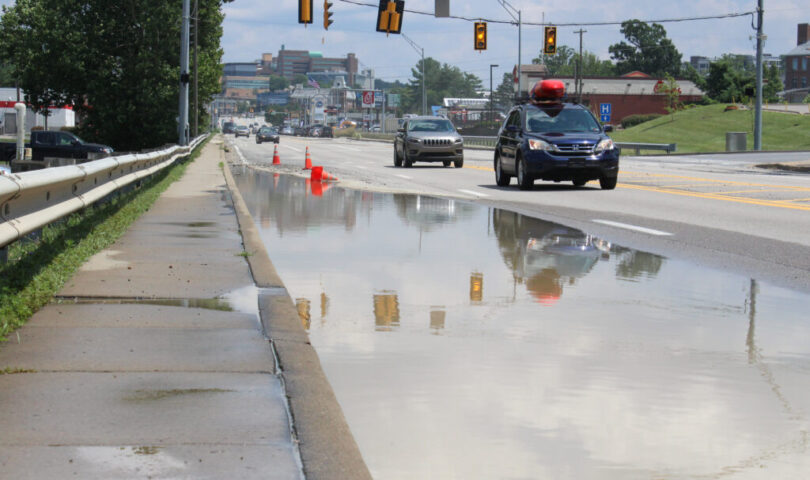MORGANTOWN — One percent.
That, according to FEMA, is the statistical probability of a 100-year storm.
The Morgantown area experienced two within 50 days last summer.
The result — hundreds of basement and overland flooding events preserved as unforgettable footage of water surging down Patteson Drive, motorists perched atop their vehicles and homes full of brown water.
Now the Morgantown Utility Board is ready to take a deep dive into exactly what happened, and what, if anything, can prevent it from happening again.
The MUB Board of Directors recently approved a $40,000 contract with Strand Associates for the first phase of a flood-control study to do just that.
The board heard from Scott Stearns, representing the engineering consultant firm, who laid out what the initial three-to-four month process will entail.
A major theme running through his presentation was expectations.
One, Stearns said, the idea of designing and building a system to handle a 100-year storm is exceedingly rare because it requires a whole lot of money in order to build very large infrastructure.
Stearns said most systems are designed to handle 10-to-25-year storms, adding, “In my career, I’ve never seen a storm sewer that was designed to handle a 100-year storm.”
Two, the rains of June 13 and July 29, 2021, resulted in exactly what FEMA predicted — areas within the 100-year flood plain were flooded by 100-year rain events.
“It’s difficult to say right now exactly what it is that needs to happen in Morgantown to, quote unquote, fix the issue, because part of the effort to determine what fixes the issue is a political discussion about, OK, well, what’s the level of service? What is expected? What does everybody expect the system to do and how should it perform,” Stearns said. “So we do a flooding location and characterization review. That’s a fancy way of saying we identify the root cause of the issue.”
In the first phase, the firm will look at existing infrastructure and system connectivity in detail and dig into priority study areas that were particularly hard-hit during flooding events.
In phase two, which will come with its own price tag and timeline, the firm will put together stormwater modeling, improvement alternatives, opinions on probable construction costs and funding options, and set up community/stakeholder feedback opportunities.
It was explained that while infrastructure is a large focus, the study will likely also inform recommendations on enhanced maintenance activities by MUB, the potential need for property acquisition in particularly at-risk zones and/or new regulations on building within the 100-year flood zone.
MUB General Manager Mike McNulty said that while MUB is willing to take on this initial investment, the second phase will need to include the West Virginia Division of Highways and WVU, both of which operate their own stormwater systems in the immediate area.
“We’re too interconnected,” McNulty said. “Each of the entities have challenges here, old infrastructure. People aren’t big on putting dollars into things you can’t see, and that’s what we have at MUB. Most of what we have is underground. You can’t see it, but we have to maintain it and so does the DOH and WVU.”
MUB is currently working on a contract to restore some 3,000 feet of the Popenoe Run stream and replace 3,000 feet of 60-year-old clay sewer lines. That project, which has received $1 million American Rescue Plan commitments from both Morgantown and Monongalia County, will bolster a portion of the system overwhelmed last summer.
But no amount of money or construction will eliminate the potential for high water.
“I can say without a doubt the take-home here is going to be flood mitigation. It will not be flood elimination,” Stearns said. “There is always a storm nature can give us that we’re not able to handle with built infrastructure.”
TWEET @DominionPostWV




